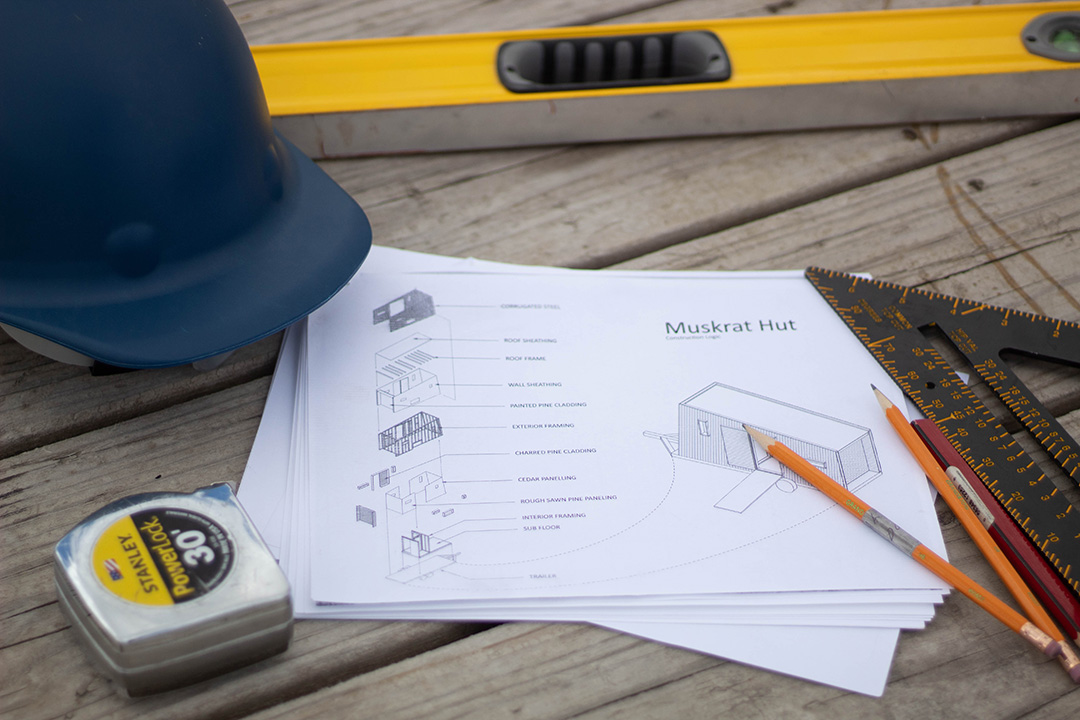
The Muskrat Hut—a solution for clean and accessible remote kitchens and washrooms
SASKATOON – For First Nations communities in northern Canada and other remote regions, access to safe and clean water, toilets, and food preparation areas presents a serious challenge to communal gatherings.
By Mitacs and USask Research Profile and ImpactFor Elders, women, youth, and gender-diverse community members, this often means they simply do not participate in community events. And chemical porta-potties and rental shower units can be expensive, environmentally hazardous, and unavailable in northern regions.
Members of the Opaskwayak Cree Nation community in Manitoba, as well as University of Saskatchewan education professor Alex Wilson and her team, want to solve this accessibility problem by relying on Indigenous knowledge and resources. They are addressing the pervasive issue of the Indigenous housing crisis by creating a solution from within the Indigenous community, building what they have aptly named a Muskrat Hut.
Also known as Wachusko weesti, the Muskrat Hut project aims to design a sustainable, locally sourced four-season prototype unit that comprises a composting toilet, shower/sauna, heat source, energy source (solar and wind), and a kitchen area.
How did the Muskrat Hut get its name?

“Canadians might be more familiar with the beaver as the hardworking symbol of Canada,” Wilson explained. “The muskrat is its lesser-known but equally persistent, quietly hard-working cousin.”
Muskrats are an important animal in the ecosystem of Northern Canadian regions, just as access to clean water and toilets is an important aspect of any communal gathering. Muskrats also have significance in the Cree cosmology and their story of evolution.
Architecture student Mario Neto and environmental engineering student Debora Boratto, both Mitacs Globalink Research Interns from Brazil, have become immersed in the project. One of the students lives on Opaskwayak Cree Nation where the prototype hut is being built, and is learning Cree language from community Elders.
“Each day here I realize that this not just a project. This is a way of a life,” said Boratto. “I don’t go to an office every day or to a university classroom. I live this project every day, which is amazing. I am not just learning technical skills, I am learning lessons from the First Nations people that are teachings for life.”
Both students have taken quite different aspects of the project on, and their internships have been tailored to suit their personalities and their academic specialties. Boratto has been concentrating on the water filtration system of the Muskrat Hut so that the water is potable, while Neto has created computer generated renderings of the hut. He has also put work into designing the steps outside the hut, as accessibility for every community member is a core value of the project.
Another central tenet is to prioritize local resources and Indigenous knowledge.
“Every project that aims to address homelessness should include that perspective at its core,” said Neto.
In addition to honing technical skills in their respective fields, the Mitacs students have also gained a unique experience in project management and problem solving.
“They really have to plan ahead and be resourceful,” said Wilson. “If they need something for the project they’re working on, they can’t just run to the store and grab it. Identifying a problem and creating a solution for it is a crucial skill for both engineers and architects, and by working on this project and living in this rural area, both Mario and Debora are gaining on the ground knowledge in problem solving.”
When asked about the outcome of the project at the end of the students’ internship, Wilson emphasized that the Muskrat Hut project will continue as one part of the larger goal to end the severe housing crisis that is facing First Nations people in Canada.
The larger goal of the Muskrat Hut project is to support community and cultural events, and ultimately address systemic issues of access to water and housing, with solutions from within Indigenous communities.
The Muskrat Hut research project is partially funded by a Canadian Social Sciences and Humanities Research Council Connections grant. The grant allowed Wilson to bring people from a number of First Nations together to assist with the design and build, and enabled the team to learn from the collaborative process and the pedagogy of One House Many Nations.
While the prototype build is taking place on Opaskwayak Cree Nation, Wilson hopes that members of different First Nations communities can come together to contribute to future design and builds of Muskrat Huts. Different Nations can share knowledge with each other and take the Muskrat Hut to their own communities, enabling access for every community member to fully partake in communal gatherings.
-30-
For more information, contact:
Jennifer Thoma
USask Media Relations
306-966-1851
Jennifer.thoma@usask.ca
ErinRose Handy
Communications Manager, Vancouver
O: 604-822-4476 C: 604-754-1440
ehandy@mitacs.ca

